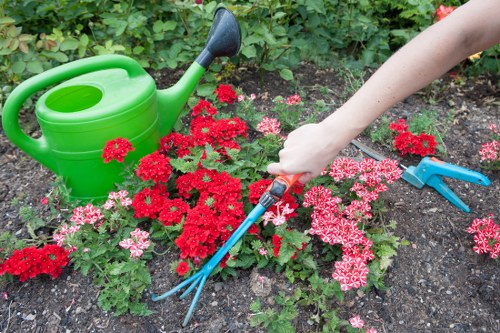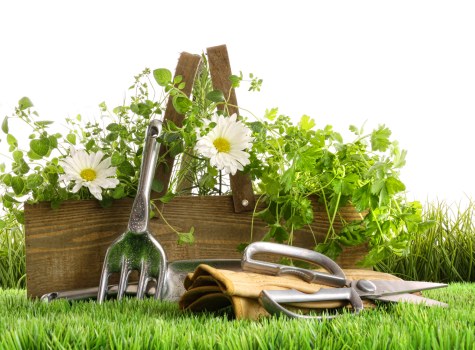Hedge Trimming in Palmers Green: A Comprehensive Guide
Introduction to Hedge Trimming

Maintaining hedges is an essential aspect of landscaping in Palmers Green. Proper hedge trimming not only enhances the aesthetic appeal of your garden but also ensures the health and longevity of the plants. Whether you're a seasoned gardener or a homeowner looking to improve your outdoor space, understanding the fundamentals of hedge trimming is crucial.
Hedge trimming involves carefully cutting and shaping hedges to achieve desirable forms and sizes. It helps in controlling the growth, preventing overgrowth, and maintaining a neat appearance. In Palmers Green, the climate and soil conditions make regular hedge maintenance even more important to ensure thriving greenery throughout the year.
There are various types of hedges, each requiring specific trimming techniques. From dense, evergreen hedges to tall, flowering varieties, knowing how to care for your specific hedge type will lead to better results and a more beautiful garden.
Benefits of Regular Hedge Trimming

Regular hedge trimming offers numerous benefits for your garden. Firstly, it promotes healthy growth by removing dead or diseased branches, allowing more sunlight and air circulation to reach the interior of the hedge. This reduces the risk of pests and diseases, ensuring your hedges remain vibrant and robust.
Additionally, trimming helps in maintaining the desired shape and size of your hedges, which is essential for creating visually appealing landscapes. Well-trimmed hedges can serve as natural boundaries, privacy screens, or decorative elements that add value to your property.
Moreover, from an environmental perspective, healthy hedges contribute to biodiversity by providing habitats for various wildlife species. They also act as windbreaks, reducing soil erosion and protecting other plants in your garden.
Essential Tools for Hedge Trimming

Having the right tools is critical for effective hedge trimming. The basic tools required include:
- Hedge trimmers: Available in manual or electric models, these are essential for cutting through dense branches.
- Pruning shears: Ideal for precise cuts on smaller branches and for shaping the hedge.
- Loppers: Useful for trimming thicker branches that are beyond the capacity of shears.
- Gloves: Protect your hands from thorns and rough branches while working.
- Ladders: Necessary for reaching higher parts of tall hedges safely.
Investing in high-quality tools not only makes the trimming process easier but also ensures better results and prolongs the life of your equipment.
Regular maintenance of these tools, such as sharpening blades and cleaning after use, will enhance their efficiency and lifespan.
Step-by-Step Hedge Trimming Guide

Trimming hedges requires a systematic approach to achieve the best results. Here's a step-by-step guide to help you through the process:
- Assess the Hedge: Determine the current shape, size, and health of your hedge. Identify any dead or diseased branches that need immediate attention.
- Plan the Shape: Decide on the desired shape and height. Common shapes include rectangular, conical, or rounded.
- Gather Your Tools: Ensure all necessary tools are clean and in good working condition.
- Start Trimming:
- Begin by removing any dead or diseased branches.
- Trim the sides of the hedge, maintaining an even shape.
- Cut the top of the hedge last, ensuring it is level to prevent water accumulation.
- Smooth the Edges:
- Use fine shears to smooth out any uneven areas.
- Ensure the hedge has a uniform appearance from all angles.
- Clean Up:
- Remove all trimmings and debris from the area to prevent pests and diseases.
Choosing Professional Hedge Trimming Services

While DIY hedge trimming can be rewarding, hiring professional services in Palmers Green offers several advantages. Experienced landscapers bring expertise and the right tools to handle various hedge types efficiently.
Professionals also ensure that the trimming is done safely, especially for large or high hedges that require specialized equipment. They can provide tailored maintenance plans to keep your hedges healthy throughout the year.
Additionally, professional services save you time and effort, allowing you to enjoy a beautiful garden without the physical strain of trimming tasks.
Contact us today to schedule a consultation and transform your garden with expert hedge trimming services.
Common Mistakes to Avoid
Avoiding common mistakes can significantly enhance the results of your hedge trimming efforts. Here are some pitfalls to watch out for:
- Over-Trimming: Cutting too much can stress the plants, leading to poor health and growth.
- Incorrect Timing: Trimming at the wrong time of year can disrupt the growth cycle and reduce the hedge’s vigor.
- Neglecting Tools: Using dull or inappropriate tools can lead to uneven cuts and damage the hedge.
- Ignoring Hedge Health: Failing to address underlying health issues can result in pest infestations and disease.
By being mindful of these mistakes, you can ensure that your hedges remain healthy, attractive, and well-maintained.
For professional advice and services, book your service now and let experts handle your hedge trimming needs.
Maintaining Your Hedges Year-Round
Hedge trimming is not a one-time task but an ongoing maintenance process. Regular care ensures that your hedges remain in optimal condition throughout the year.
In the spring, focus on promoting new growth by trimming lightly and removing any winter damage. Summer may require more frequent trimming to manage faster growth rates, while autumn is ideal for shaping and preparing the hedges for winter.
During winter, protect your hedges from extreme cold and reduce trimming activities to prevent damage.
Implementing a consistent maintenance schedule will help you achieve well-structured and healthy hedges that enhance your garden's beauty year-round.
Don't wait—contact us today for ongoing maintenance services tailored to your specific hedge needs.
Environmental Considerations
Trimming hedges with the environment in mind contributes to a sustainable and eco-friendly garden. Here are some tips to ensure your hedge trimming practices are environmentally responsible:
- Use Electric Tools: Opt for electric or battery-powered hedge trimmers to reduce carbon emissions compared to gas-powered alternatives.
- Compost Clippings: Instead of discarding trimmings, compost them to create nutrient-rich soil for your garden.
- Selective Pruning: Only remove diseased or overgrown branches to maintain the natural balance of your hedges.
- Water Conservation: Ensure that trimmed hedges are appropriately watered to promote healthy growth without excessive water usage.
Adopting these practices not only benefits your hedges but also supports a healthier environment.
Book your service now to ensure your hedge trimming aligns with eco-friendly standards.
Conclusion
Effective hedge trimming in Palmers Green is a combination of proper techniques, the right tools, and regular maintenance. By understanding the benefits and following a structured approach, you can achieve beautiful, healthy hedges that enhance your garden's appeal.
Whether you choose to undertake the task yourself or hire professional services, prioritizing hedge care will lead to long-lasting and attractive landscapes.
Ready to transform your garden? Contact us today to learn more about our expert hedge trimming services and how we can help you achieve the garden of your dreams.

